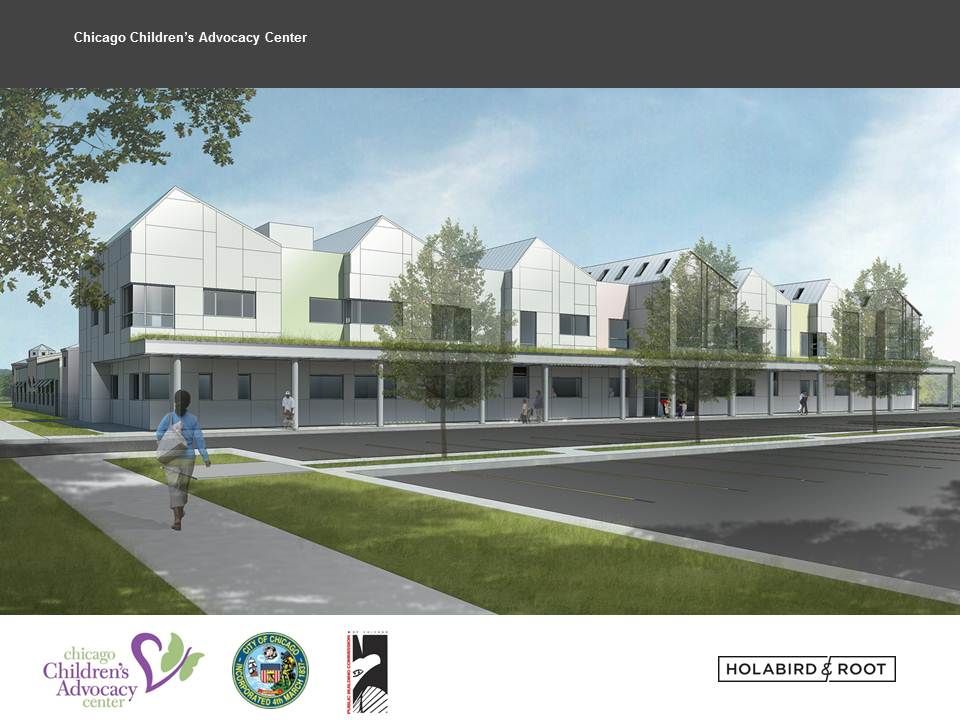The Chicago Children’s Advocacy Center (ChicagoCAC) is an innovative not-for-profit facility that co-houses all the City and State agencies that investigate allegations of sexual abuse of children, and provide social services to child victims and their families. PBC managed the construction of the center’s original facility in 2001, but with over 3,000 children and family members coming through the center for aid every year, ChicagoCAC outgrew its space. So, in 2015, the PBC supervised the design and construction a two-story, 18,900 square foot expansion to the Center.
ChicagoCAC is one of the largest children’s advocacy centers in the country and one of only a few at which all partner agencies are co-located. This added an extra level of care, planning, and attention to the collaboration needs of these parties. Teamwork, cooperation, and partnership needs were at the center of every conversation regarding the new design, with input from the building staff, onsite partners, a board of directors, and several community leaders.
“The unique nature of the ChicagoCAC is the collaboration. We are the only organization in the City that does this collaborative work with the Chicago Police Department, Department of Children and Family Services, Cook County State’s Attorney’s Office, and Stroger Hospital. We do it all in this child-friendly Center.”
– Char Rivette, Executive Director, Chicago Children’s Advocacy Center
PBC worked in close partnership with the ChicagoCAC to understand its new needs, synthesize those needs with its current uses, and respect the building’s original architecture while reflecting its current and future mission. As a civic cornerstone to the City of Chicago, several public partners were involved in the development of the final design of the addition, including the Chicago Police Department, the office of the States Attorney, the Cook County Health and Hospital Systems, and the Department of Children and Family Services.
“The collaboration and expertise that the PBC brought to the table for this very special user group ensured the success of this project. This project required certain sensitivities outside of the typical program. The PBC ensured we were all working together toward the collective goals of the ChicagoCAC. This was not specific to the design process, but the entire process. The General Contractor, IHC, carried this approach through construction, creating an open and collaborative process that was easy for all to work with.”
– Jan Behounek, Project Manager, Holabird & Root
From the beginning, it was the understanding of both the developers and designers that any addition required an appropriate response to the beloved architecture of the legacy building. Chicago architect Stanley Tigerman incorporated child-friendly elements into each aspect of his design, including bright colors and an abundance of natural light. The new 18,000-square-foot expansion, which doubles the size of the original center, respects the scale, materials and intent of the original building. The interior and exterior of our building are brightly colored to mimic a playhouse or castle that a child might design. Windows sit low so that children can see out and plenty of light can come in. The main entry lobby interiors subtly incorporate the playful colors from the exterior façade, drawing visitors in to the heart of the building.
The addition has enabled the ChicagoCAC to expand its services and programs to its families. The additional space increased and number of child-and-family-friendly spaces, shaped the physical environment to enhance collaboration among teams, and doubled the mental health program capacity by adding staff and dedicated space. The new training space allows the ChicagoCAC to further expand its programs, as well as outreach and fundraising efforts, by offering a space to accommodate 100 people.
The entire facility is designed to be under operation 24 hours a day, 7 days a week. With that in mind, the aesthetic and environmental aspects of the spaces both inside and outside of the building incorporated several sustainability goals, and the new addition has achieved LEED Gold certification.
More information on the legacy facility can be found here.
More photos on Flickr.
- Pay Application #1 (1/29/14)
- Pay Application #2 (3/24/14)
- Pay Application #3 (4/22/14)
- Pay Application #4 (5/28/14)
- Pay Application #5 (7/3/14)
- Pay Application #6 (8/7/14)
- Pay Application #7 (9/2/14)
- Pay Application #8 (10/6/14)
- Pay Application #9 (11/20/14)
- Pay Application #10 (12/18/14)
- Pay Application #11 (2/3/15)
- Pay Application #12 (3/24/15)
- Pay Application #13 (4/2/15)
- Pay Application #14 (7/29/15)
- Pay Application #15 (10/13/16)
- Pay Application #16 (2/3/17)
- Pay Application #17 (5/31/17)
- Pay Application #19 (4/16/19)
- ChicagoCAC, PBC Celebrate Center’s 15th Anniversary
- Public Building Commission Projects Win Top Honors at 2016 Chicago Construction Industry Award Ceremonies
- Public Building Commission Announces Newest LEED Certified Project
- Public Building Commission Releases Mid-Year Performance Report
- Chicago Children’s Advocacy Center, Public Building Commission Dedicate 18,000-square-foot Expansion
